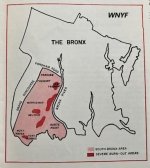- Joined
- Sep 25, 2013
- Messages
- 859
From their own website https://burned.journalism.cuny.edu/
CUNY Graduate School of Journalism students, in conjunction with non-profit investigative news site City Limits, have delved into the past, present and future of arson in New York City.
This appears to be a student school project.
About the Project
CUNY Graduate School of Journalism students, in conjunction with non-profit investigative news site City Limits, have delved into the past, present and future of arson in New York City.
This appears to be a student school project.
Last edited:


